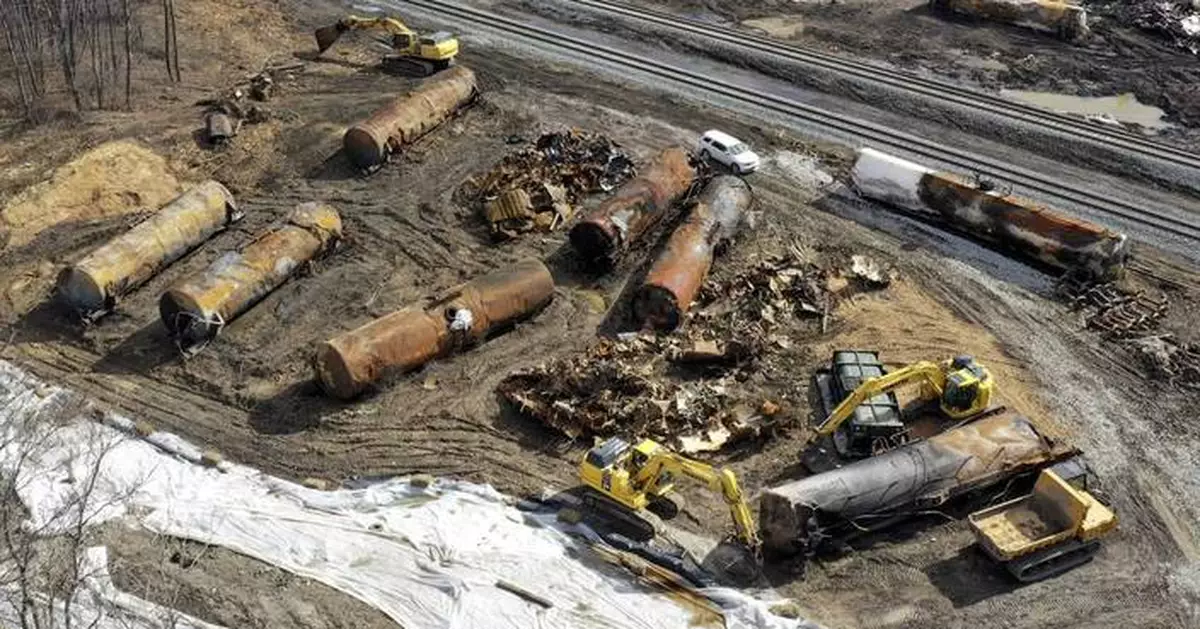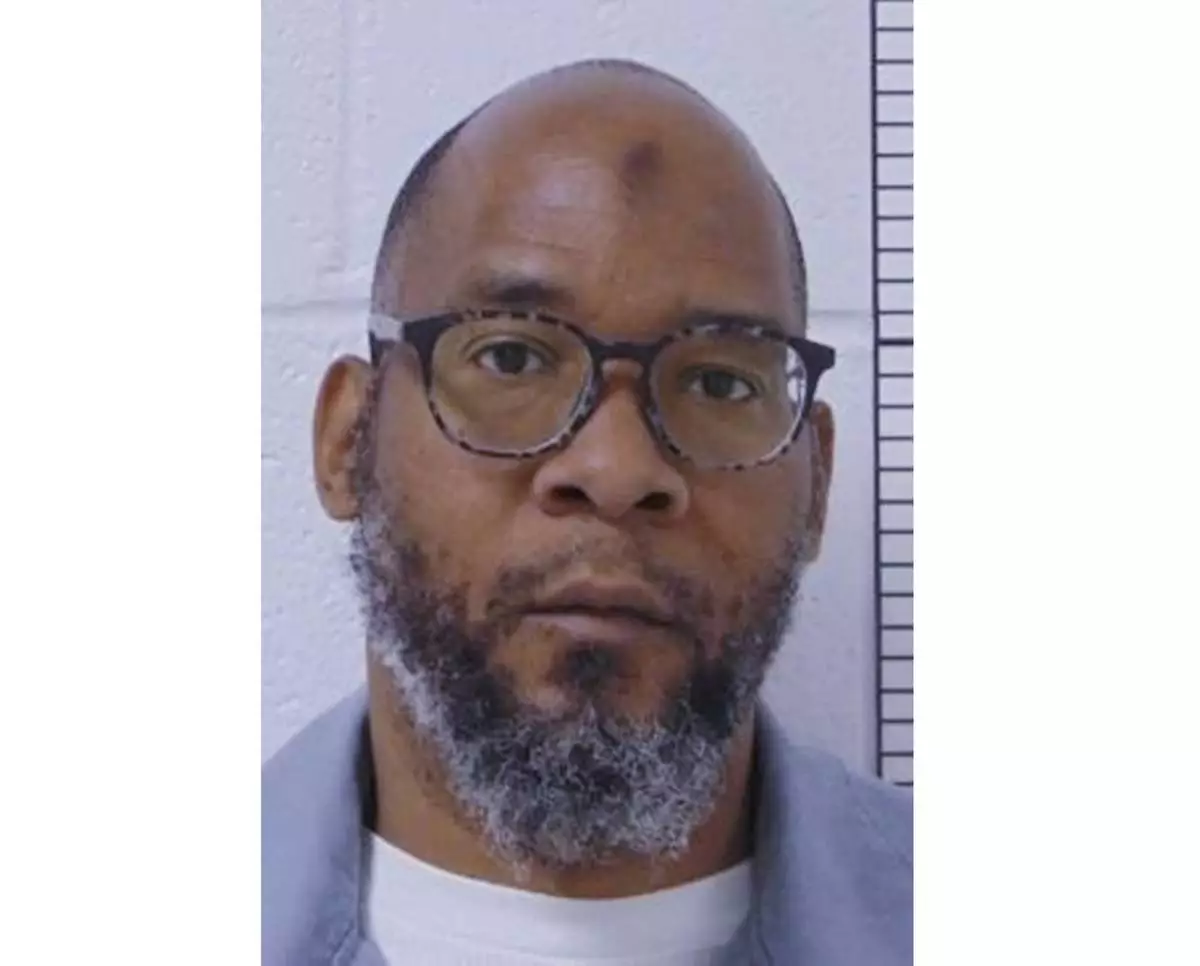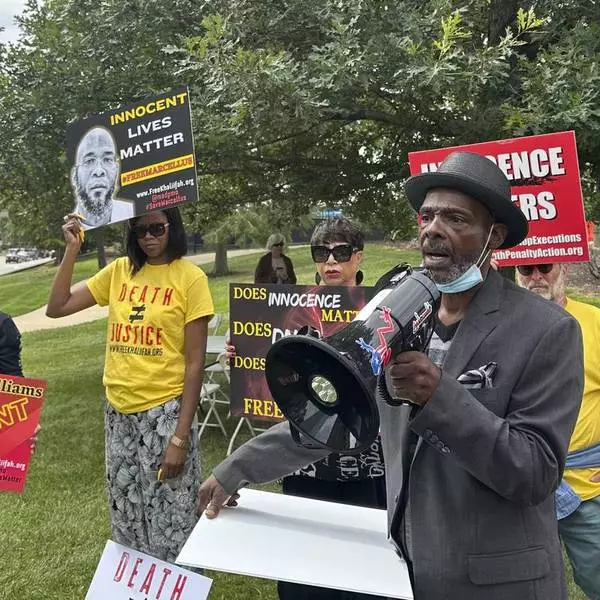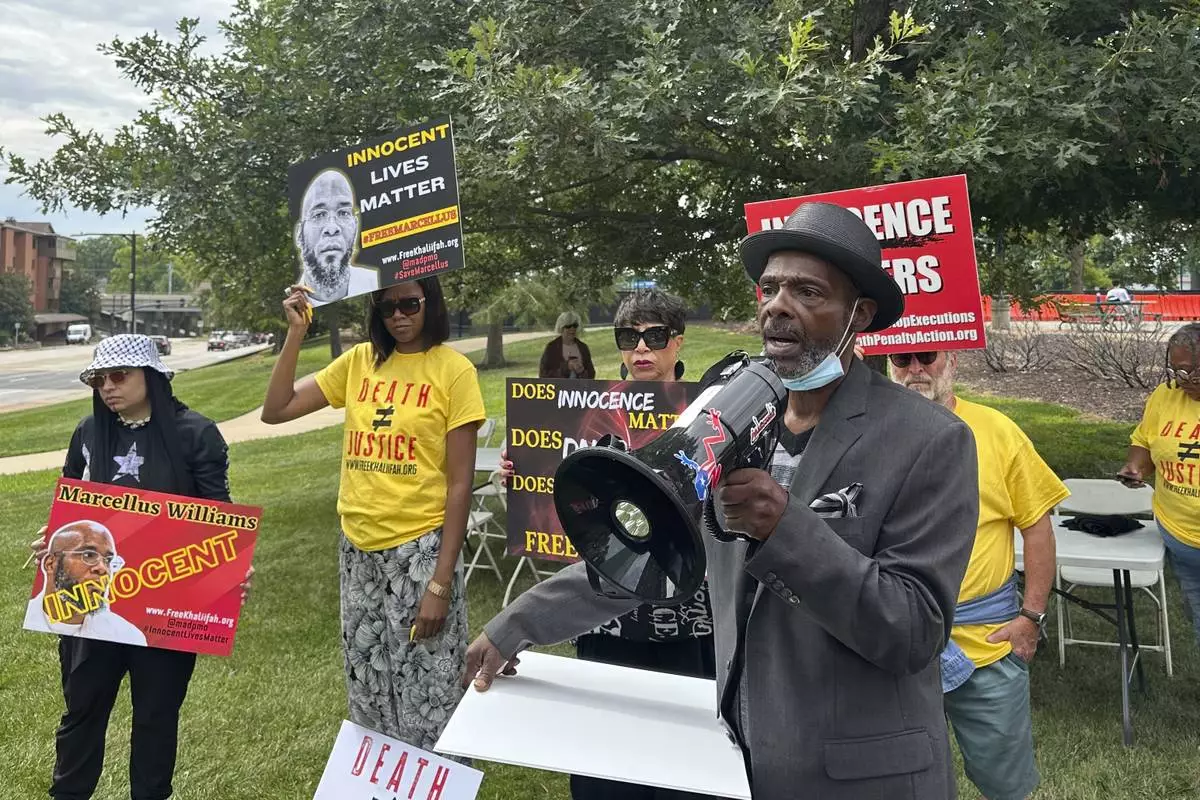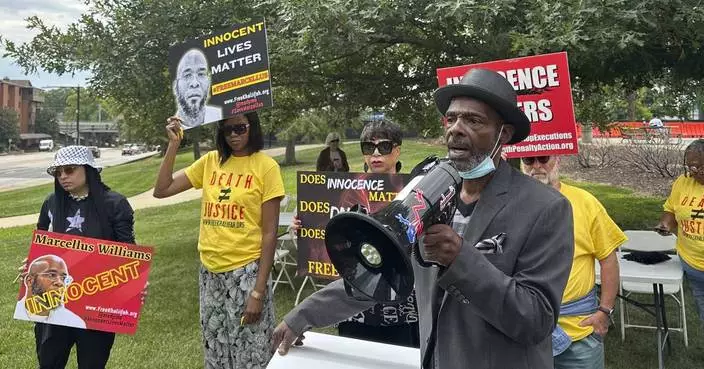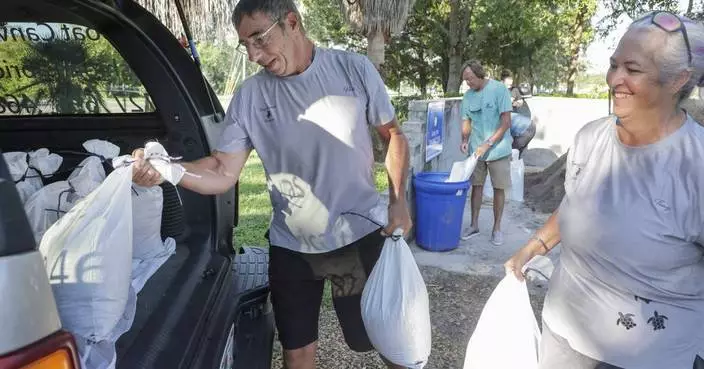The way the Environmental Protection Agency has reported its test results since a Norfolk Southern train derailed and officials released and burned chemicals that spewed a toxic cloud over East Palestine, Ohio, makes it hard for residents to know the full extent of contamination and potential risks to their health.
Data analyzed by The Associated Press show the EPA doesn’t provide a specific measurement for chemicals that fall below a reporting limit, making it harder to know how much is there.
The EPA has said that residents shouldn’t worry about contamination from chemicals that are below the human health screening level that indicates danger and is usually higher than that reporting limit. But some health experts say that when mixed together, as they are in East Palestine, even levels of chemicals below that standard could raise the risk for cancer or other serious health problems. Extended exposure to low levels of chemicals might also cause problems.
The agency’s lack of transparency, combined with independent tests that appear to show lingering problem areas from the February 2023 derailment, are making it hard for some residents to trust the EPA’s assurances that they will be safe.
“I used to feel like those were agencies to protect people, but I don’t feel like that anymore,” said Krissy Ferguson, who still isn’t living in her home because of her concerns. “They need to come forth and do the right thing. They know these chemicals just don’t go away.”
The test results the government reports are often labeled undetectable because the EPA says there isn't enough of a chemical present to reliably determine how much is there. The agency doesn't report exact numbers when the results are below a conservative reporting limit identified by the lab.
But results from the railroad's contractors and independent testers working in East Palestine include more details. Those spreadsheets include actual results even when they are below the reporting limits.
That's because there is a lower threshold called a method detection limit that spells out what a test is capable of finding. Testing experts say they generally report results above that lower limit because the numbers are considered reliable.
The EPA hasn’t explained why it hasn’t disclosed detailed data on low levels of chemicals but has said its work in East Palestine is focused on levels high enough to pose an immediate threat to human health. When asked about testing of creeks near the site of the derailment, the agency said in a statement that “none of the data that we’ve reviewed shows chemicals in the sediments far exceeding the long-term human health screening levels. Put simply, short term exposure to the sediments will not have meaningful increase in risk to human health."
The EPA data and independent tests done this year do show the level of chemicals in the creeks improving after the cleanup efforts, even though some potentially dangerous substances linger at low levels. The agency also says that some of the contamination was likely present before the derailment because of industries that operated in East Palestine decades ago.
The latest spreadsheet EPA posted on its East Palestine website last month shows 8,758 soil and sediment test results produced since the derailment. Some 6,400 of those entries declare there wasn’t enough of an individual chemical found to report it accurately under a conservative reporting limit. But new data from Norfolk Southern’s contractors, who have done most of the testing, reveal that 25,442 of 26,874 test results from last year — nearly 95% — had detectable levels of chemicals, according to the detailed information the lab provides.
Carnegie Mellon professor Neil Donahue, director of that university’s Steinbrenner Institute for Environmental Education and Research, said it’s customary to report any data that’s over the method detection limit because the numbers are considered reliable. Other experts agreed the EPA should just report the data it has and explain it.
“Why don’t they just straight tell people what the truth is? Do they not think we can handle it?” said resident Christina Siceloff.
Even though it’s hard to know exactly how much of a health threat exists, medical researchers say there are real concerns in East Palestine because some residents have reported unexplained health problems since the derailment, including respiratory issues, rashes, hair loss, nosebleeds, asthma and at least one case of male breast cancer that prompted a double mastectomy.
The human health screening levels that EPA is relying on are based on short-term exposure. It's less clear what it means to be exposed to these chemicals over a longer period of time.
Researchers like Dr. Beatrice Golomb say that prolonged exposure to low levels of chemicals can be a problem. And even when there is a standard for exposure to a single chemical, there is no good research establishing what it would mean to be exposed to a mixture of chemicals, said Golomb, who is based at the University of California San Diego.
It's not clear exactly what combinations of chemicals were created after several tank cars filled with hazardous chemicals spilled their contents and caught fire. Three days after the derailment, officials unnecessarily blew open five tank cars of vinyl chloride and burned that plastic ingredient because they feared those cars would explode. New substances were created when all those chemicals burned.
A federal judge will hear arguments Wednesday about whether a $600 million class action settlement the railroad is offering to residents who live within 20 miles (32 kilometers) of the derailment should be approved.
Some residents say the deal shouldn't be approved because they don't have enough information to evaluate whether they are getting enough compensation. People who live within 2 miles (3.2 kilometers) of the derailment can get up to $70,000 per household for property damage and up to $25,000 per person for any health problems, though the amounts offered drop off for those living farther away.
The lawyers involved in the settlement say they believe it is fair based on what they know. But they haven’t shared details of their investigation with residents.
Stephen Petty, a forensic engineering expert hired by class-action attorneys to evaluate the contamination before residents agreed to the settlement, said that when the EPA reports it couldn’t detect any results, “they’re implying that they’re small or not useful. But that’s not true.” He said EPA is “misrepresenting what the actual data likely is.”
Petty can’t disclose his own test results unless a judge orders him to — like residents have asked — because of the settlement agreement, but he said the EPA shouldn’t be so quick to dismiss the testing other independent testers have done.
The lack of detail in EPA data could influence whether the judge approves the settlement. Lawyer Dan Abraham, who represents 35 people who objected to the deal, said it shouldn’t be approved yet because the attorneys who negotiated it haven’t released results of Petty’s tests or other details they’ve learned.
The lawyers who negotiated the deal say that most people who live within the area covered support it and that roughly 55,000 claims were filed. Only 370 households and 47 businesses opted out.
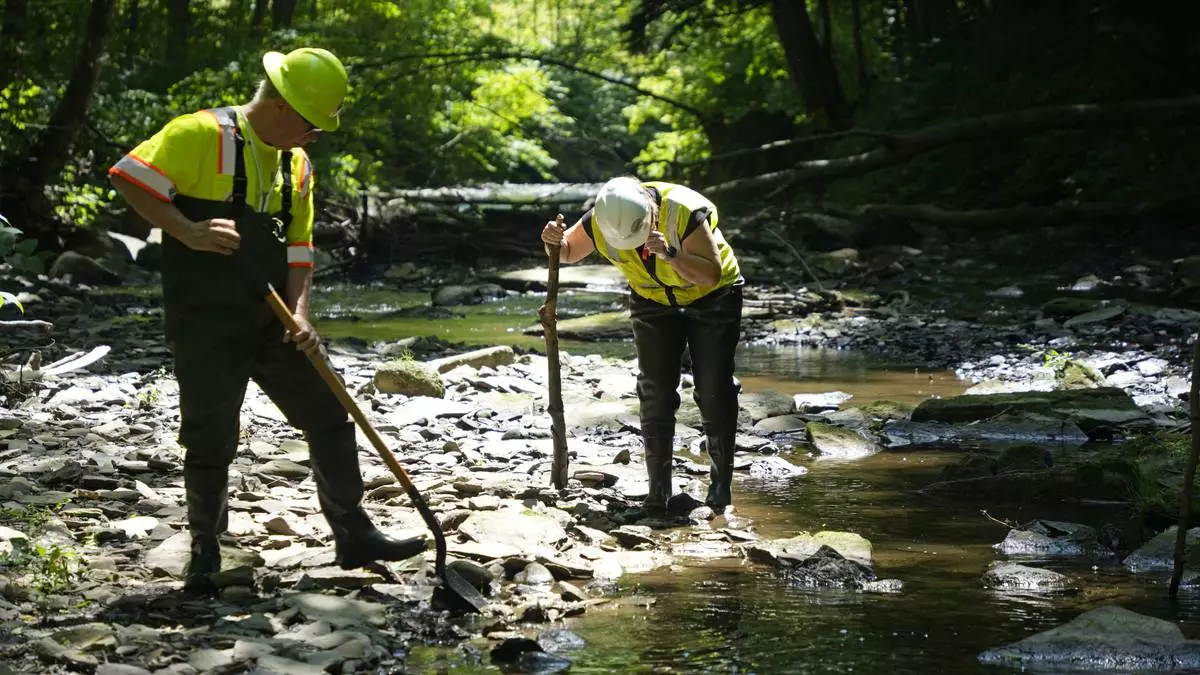
FILE - Environmental Protection Agency workers work in Leslie Run in East Palestine, Ohio, June 12, 2024. (AP Photo/Gene J. Puskar, File)
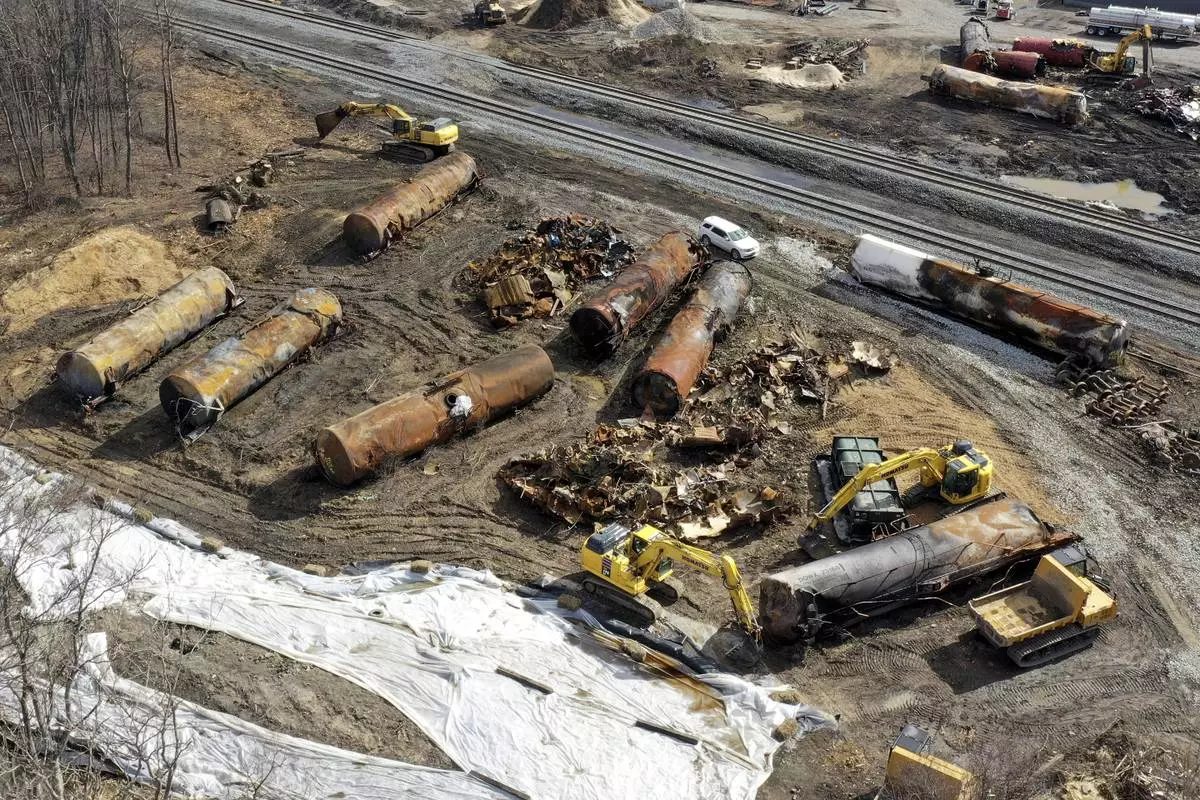
FILE - Cleanup continues, Feb. 24, 2023, at the site of a Norfolk Southern freight train derailment that happened on Feb. 3, in East Palestine, Ohio. (AP Photo/Matt Freed, File)


